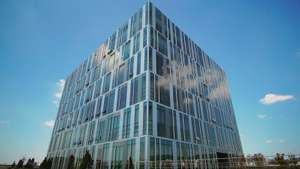
Investigation of single- and double-layer slabs supported on four sides.
 Oleksandr Zhuravskyi 1* Ph.D., Associate Professor
Oleksandr Zhuravskyi 1* Ph.D., Associate Professor Dmytro Smorkalov 1 Ph.D., Associate Professor.
Dmytro Smorkalov 1 Ph.D., Associate Professor.
1 Department of Reinforced Concrete and Stone Structures of Kyiv National University of Construction and Architecture, Povitroflotskyi Avenue, 31, Kyiv, 03680, Ukraine;
Received: 11/15/2018, Accepted: 12/29/2018, Available online: 12/29/2018.
DOI: https://doi.org/10.32557/useful-2-4-2018-0005
HDL: https://hdl.handle.net/20.500.12334/89
*Corresponding author e-mail: azhur@ua.fm
Under a creative commons license. Volume 2, Issue 4, 2018, pages: 44-55.
Plagiarism was checked by Grammarly
Author Keywords: single-layer and two-layer slabs, short-term lateral load, steel fiber concrete, reinforced concrete, deflection of slabs, finite element method.
Abstarct
Presented method and results of experimental research of deflection of single-layer and two-layer slabs influenced by short-term lateral load. Proposed method of calculation based on the limit equilibrium method, calculation of slab deflections values by LIRA-CAD bundled software. The comparison of experimental and theoretical results of the calculation of deflections slabs.
1. Introduction.
Layered constructions are increasingly applied in building recently. When appropriate composition of separate layers is selected, multi-layer constructions with perfect construction properties may be created [9]. Layers are mostly composed of heavy concrete and effective steel fiber concrete. Such constructive decisions have a widespread use in road and airfield pavements, logistics areas, heavy-weight industrial floors, etc. [13, 15, 16]. Among the most promising trends of reasonable usage of steel fiber concrete is its application in composite structures, as a rule, in combination with concrete or ferroconcrete, with distinct partition of functions of every material. In particular, the steel fiber concrete that is rather thriftily applied along the construction outline, in a thin layer, provides high crack resistance of constructions, as well as well as its high durability due to high indices of tensile strength, frost resistance, corrosion resistance, and high rates of other types of resistance of the steel fiber concrete [14]. At the same time, this solution provides necessary preconditions for significant reduction of strength and value of the primary concrete and reduction of the number of reinforcement rod. Thus, there are preconditions for obtaining high indices created while their cost drops.
References
[1] Barashykov A.Ya., Smorkalov D.V. Calculation of solidity of one-layer and two-layer reinforced concrete slabs supported on four sides. Resource efficient materials, structures, buildings, and constructions: Collected studies. Rivne, 2014, Issue 28, 127-134 (in Ukraine).
[2] Galerkin B.G. The resilient thin plate. M, Gosstroiizdat, 1933, 458 (in Russian).
[3] Gorodetsky A.S., Schmukler V.S., Bondarev A.V. Information Technology of calculation and design of building structures: Proc. Manual. Kharkiv, NTU "KhPI", 2003, 889 (in Russian).
[4] Gvozdev A.A. Calculation of bearing capacity by limit equilibrium method. Moscow, Stroyizdat, 1949, 280 (in Russian).
[5] Zhuravskyi O.D., Smorkalov D.V. Methodology and results of experimental studies of two-layer slabs. Steel reinforcement concrete constructions. Research, design, construction, operation: Collected research papers, Issue 5, Kryvyi Rig, KTU, 2002 (in Ukraine).
[6] Korolyov A.N. Calculation methods for slab deflections supported on four sides at short-term load. Concrete and reinforced concrete Vol. 3, 1960, 9-11 (in Russian).
[7] Murashev V.I. Crack resistance, stiffness and strength of concrete. M, Mashstroyizdat, 1950, 230 (in Russian).
[8] LIRA-CAD 2011. Tutorial: Electronic Edition , 2011, 396 (in Russian).
[9] Rudenko N. The development of conception of new generation concretes. TEKA: Kom. Mot. Energ. Roln, 2014, Vol. XB, 128-133.
[10] Smorkalov D.V. Crack resistance and fracture modes for two-layer slabs. Resource efficient materials, structures, buildings, and constructions: Collected research papers. Rivne, 2003, Issue 9, 323-330 (in Ukraine).
[11] Snyder M. Factors affecting the flexural strength of steel fibrous concrete. ACI Journal, 1972, Vol. 69, No. 2, 96-100.
[12] SP 52-103-2007. Code of practice on design and construction. Reinforced concrete cast-in-place constructions of buildings. Moscow, 2007 (in Russian).
[13] Stages A. Ring fiber reinforced concrete. ACI Journal. 1981, Vol. 78, No. 5, 369-373.
[14] ACI Journal. State-of-the-art report on fiber reinforced concrete. 1973, Vol. 70, 729-744.
[15] Tarasov V.P. The use of fiber-reinforced concrete in construction. Industrial construction. 1974, Vol. 7, 44-45 (in Russian).
[16] Tattersall G.H. Bond strength in steel-fibre-reinforced concrete. Journal of Concrete Research. 1974, Vol. 26, No. 87, 105-113. DOI: https://doi.org/10.1680/macr.1974.26.87.105
[17] Baranenko V.A., Volchok D.L. Calculation of the maximum load value of a compressed orthotropic shell under conditions of random, fuzzy and rough information // Strength of material and theory of structures. – 2017. – Issue 99. – Р. 71 – 89. (in Ukraine).
[18] Gaidaichuk V.V., Mozgoviy V.V., Zaiets Yu.O., Shevchuk L.V. Simulation of stressstrain states of road structures under action of transport loads // Strength of materials and theory of structures. – 2017. – Issue 99. – Р. 45 – 57. (in Ukraine).
Please cite as: O.Zhuravskyi, D.Smorkalov “Investigation of single- and double-layer slabs supported on four sides.” USEFUL online journal, vol. 2, no. 4, pp. 44–55, December 2018. DOI: https://doi.org/10.32557/useful-2-4-2018-0005







Comments